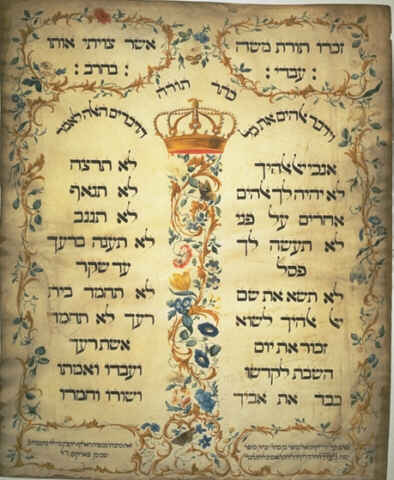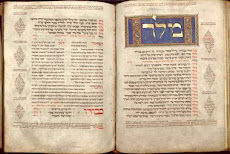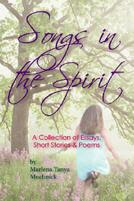Marlena's Musings
Shalom! http://comeuntochrist.blogspot.com is devoted to the 12 families of Israel. Posts information about Jewish holidays, Hebrew scriptural language and meaning, the true Gospel, principles of the Savior's teachings, how LDS beliefs are intrinsically connected to Judaism. Companion blogsite - http://judaicaworld.blogspot.com. Email Marlena at marlenatanya@gmail.com
The Savior of Mankind

Hear, O Israel. Here is thy Moshiah!
Evolutionary religion is the quest for truth.
Revelatory religion IS that truth.
PLEASE PRAY FOR ISRAEL! SHE IS SOON TO BE BESEIGED BY THE COUNTRIES AROUND HER... REMEMBER...
News: Fireside, workshop updates and questions
Article by Marlena on www.Jewishjournal.com. Why would a Jew Become a Mormon? Edited version. See link:
http://www.jewishjournal.com/jews_and_mormons/item/why_should_a_jew_become_a_mormon_ask_marlena_39120605/
A Mormon's Guide to Judaism and Notes of a Jewish Convert to the LDS Church and People of The Book on Kindle!
=Buy them now, download to your phone and read them anytime for an understanding of Judaism and Mormon life.
*******************Marlena Marlena gives free lessons on Judaica history, culture and religon and especially loves to give firesides on her conversion and share learning in workshop presentation. Available in Seattle and around the country. Subject: The Symbolic Connections between Mormon and Jewish worship.
http://judaicaworld.wordpress.com/ My overflow blogsite: Now there are over 120 articles on this site: In-depth articles on Judaism, timelines, OT supplements, biblical equivalent tables, pictures, videos, songs and more... List and texts of older posts and articles.This site is where former blog articles spend eternity!
Click on:http://mormonsandjews.net/ Check out http://judaicaworld.blogspot.com and www.jewishconvert-lds.com, www.peopleofthebook-judaica.com.
If Romney wins: Five things every Jew should know about Mormonism
October 19, 2012
BY MARK PAREDES

Republican presidential candidate Mitt Romney at a campaign rally in Westerville, Ohio, on Sept. 26. Photo by REUTERS/Brian Snyder
1. Devout Mormons can be found all across the political spectrum.
The Mormon Church doesn’t endorse candidates or political parties, and although most American Mormons are Republicans, a Mormon Democrat has served as the Senate Majority Leader for the last five years. Owing to our history of persecution and emphasis on self-reliance, there is also a noteworthy group of Mormons with libertarian sympathies who do not easily identify with either party.
Mormons can be found on all sides of most issues. On immigration, for example, many Mormons tend to be more liberal than other Republicans (or Democrats, for that matter). Many of us have served missions abroad, and tend not to be too judgmental of people who come here seeking a better life. Although Mormons generally agree on many important moral issues (see below), there is no consensus on economics and the proper role of government. We all agree, for example, that we have an obligation to help the poor. However, the extent to which government should help meet their needs by taxing others is a point of contention among followers of most faiths, including ours.
2. Mormonism is part of the Judeo-Christian tradition.
Our church (the Church of Jesus Christ of Latter-day Saints) bears the name of the Christian Savior, we believe in the God of Israel, we accept the Hebrew Bible and New Testament as Scripture, we worship in chapels and temples, and we consider ourselves to be covenant Israelites. Mormons follow the Ten Commandments and are Noahides. In addition, the Abrahamic Covenant is central to our faith. Like Jews, the family is central to our faith, and our idea of heaven is to live with our spouses and families for eternity.
3. A Mormon president would not take orders from Salt Lake City.
If Mitt Romney wins, he’ll undoubtedly have the same arrangement with top church leaders that other Mormons have with local leaders: They don’t tell us how to do our jobs, and we don’t tell them how to run the church. Even Romney’s most intractable foes haven’t accused LDS church headquarters of drafting Romneycare in Massachusetts, and it’s safe to assume that church leaders aren’t behind Harry Reid’s shameful promotion of Las Vegas gambling interests in Washington. Mormons are used to looking to their leaders for spiritual advice, not professional guidance. While I would certainly expect Romney to consult with Mormon leaders as part of his general outreach efforts to faith communities (including Jewish leaders), I am confident that he will be his own man when it comes to formulating policies for the nation. I am also confident that Mormons will not be overrepresented in his administration, as Romney has a history of hiring capable people from all backgrounds to work for him.
4. On moral issues, Mormons are not extreme right-wingers.
A closer look shows the views of most Mormons on these issues to be much more nuanced. Let’s take abortion, for example. The LDS church is very much against it but does allow for possible exceptions in the case of rape, incest, a threat to the mother’s life or when the baby is not expected to survive childbirth. That’s pretty much Romney’s campaign’s abortion platform.
On gay issues, it is accurate to say that Mormons oppose state-sanctioned, same-sex marriage. However, it is both inaccurate and insulting to say that we are anti-gay. We can and do support many other issues that are important to gays. For example, former LDS Sen. Gordon Smith (R-Ore.) introduced a Senate bill that would have added sexual orientation to the list of protected categories for hate crimes. Every Mormon I know is opposed to discrimination against gays in education, employment and housing. We also support rights for same-sex couples regarding hospitalization and medical care, probate rights, etc., so long as the integrity of the traditional family is not affected. As for theology, the LDS church teaches that homosexuality is not sinful in and of itself, as long as one remains chaste.
Although Mormons tend to have more children than the national average, our church doesn’t take a position on birth control. In addition, the church takes no position on capital punishment, stem-cell research, evolution or global warming. As a result, faithful Mormons are advocates for positions on all sides of these issues.
5. Mormons are philo-Semites and pro-Israel.
One of our basic Articles of Faith affirms: “We believe in the literal gathering of Israel and in the restoration of the Ten Tribes.” In 1841, LDS Apostle Orson Hyde offered a prayer on the Mount of Olives dedicating the Land of Israel for the gathering of the Jews. Israel went on to receive at least 11 apostolic blessings before the establishment of the State of Israel in 1948. For more than five decades (1870s-1920s), the church seriously considered establishing a Mormon colony in Palestine. Today, Brigham Young University has a beautiful center on Mount Scopus with the best view of the Old City in Jerusalem.
In the United States, Mormon pioneers arrived in the Utah territory in 1847. The first Jews arrived two years later, in 1849. The first Jewish worship service was held in 1864 in Salt Lake City. Rosh Hashanah was celebrated in Temple Square (the city center) in 1865. Brigham Young donated his personal land for a Jewish cemetery in 1866. In 1903, church President Joseph F. Smith spoke at the ceremony for the laying of the cornerstone for the state’s first Orthodox synagogue, which was largely paid for by the church. The second and third Jewish governors in the country were elected in Idaho (1914) and Utah (1916), the two states with the highest percentage of Mormons. Salt Lake City had a Jewish mayor by 1932, more than four decades before New York City.
Most Mormons in this country are very pro-Israel, and Romney is no exception. He has a close, decades-long personal relationship with Israeli Prime Minister Benjamin Netanyahu, who looks likely to be elected to another term. If Romney is elected, Jews and Israelis can be assured that they will have a true friend in the White House.
Mark Paredes writes the Jews and Mormons blog for the Jewish Journal and is a member of the LDS church's Jewish Relations Committee for Southern California. Read the Jews and Mormons blog atjewishjournal.com.
Search This Blog
A Mormon Girl Among Jews
 At Sunday school, I learned about the Israelites and end-times. Then bar mitzvah season began.
At Sunday school, I learned about the Israelites and end-times. Then bar mitzvah season began.
By Joanna Brooks|August 8, 2012
Before I met any Jewish people, I learned about Jews in my Mormon Sunday school classes. But no one used the word “Jews.” Instead, it was always “Israel,” or “the tribes of Israel,” or “Israelites.” Or maybe even “Hebrews.”
During sacrament meeting on Sunday morning, I would trace the movements of the Israelites charted on the colored maps at the back of my scriptures. Perhaps the most important of these movements, I learned, was the exodus of a small family of Israelites led by a righteous man named Lehi away from the land of their ancestors and across the ocean to the Americas, where they grew and divided and clashed and became the civilizations of the Book of Mormon.
In Sunday school, I studied the colorful Arnold Friberg Book of Mormon illustrations that my teacher propped up on her knees as we all sat in our little semicircle of child-sized chairs. The Israelites in these pictures were tall, dark-haired, and heroically muscled. Their expertly crafted wooden ships parted the waters as they approached some unspecified American coastline. At the center of the painting stood Lehi, the white-bearded patriarch, looking toward the heavens in prayer as the rest of the traveling party strained to see land on the horizon; his wife, Sariah, clung to him and silently rested her head upon his shoulder, eyes closed.
After church, because our family kept the Sabbath, I was not allowed to watch secular television, only Cecil B. DeMille’s The Ten Commandments. Sunday afternoons, my sisters and brother and I would watch the Israelites—mostly tall and sculpted (Charlton Heston, John Derek) or lovely and lithe (Yvonne DeCarlo)—act and reenact their epic journey from slavery and across the sea and the deserts to freedom.
read the rest at
http://www.tabletmag.com/jewish-life-and-religion/108421/a-mormon-girl-among-jews?all=1ShareThis
The Passover Haggadah
A brief overview of the book that serves as guide, script, and liturgy of the Passover seder.By Rabbi Louis Jacobs
Excerpted with permission from The Jewish Religion: A Companion, published by Oxford University
 Press.Haggadah--"the telling"--[is] the book containing the passages dealing with the theme of the Exodus recited at the Passover seder. The reading of the Haggadah is based on the verse, "You shall tell your son on that day: it is because of what the Lord did for me when I came forth out of Egypt" (Exodus 13:8).
Press.Haggadah--"the telling"--[is] the book containing the passages dealing with the theme of the Exodus recited at the Passover seder. The reading of the Haggadah is based on the verse, "You shall tell your son on that day: it is because of what the Lord did for me when I came forth out of Egypt" (Exodus 13:8).
Although the Talmud mentions some features of the "telling" by the father [or other leader] at the seder, no formal Haggadah was produced until the Middle Ages, when the current form was established in essence and became universally accepted.
The Haggadah now contains passages from early and late sources dealing with the Exodus, instructions for the conduct of the seder, Psalms, and other songs of praise, grace before and after meals, concluding in the Ashkenazic version with a number of table songs.
It has been estimated that no fewer than 2,000 different editions of the Haggadah have been published. No other Jewish sacred book has enjoyed such popularity. The Haggadah is, of course, a sacred book. Its theme, the delivery of the people of Israel from Egyptian bondage, is more than a celebration of freedom as such. It is a celebration of the freedom the people of Israel attained in order to become God's people and receive His Torah.
Yet even secular Jews enjoy the Passover Seder and read the Haggadah as the ancient manifesto of liberty for all. Very few secular Jews, however, have gone so far as to produce an edition of the Haggadah, like the notorious "Godless Haggadah," from which all the references to God and His deliverance have been removed.
Many Haggadot have been published with commentaries by outstanding scholars and many are richly illustrated. Illuminated manuscripts and early editions of the Haggadah are now highly prized collectors' items.
Rabbi Dr. Louis Jacobs (1920-2006) was a Masorti rabbi, the first leader of Masorti Judaism (also known as Conservative Judaism) in the United Kingdom, and a leading writer and thinker on Judaism.
Joseph Smith Papers website
 Now access the new site at www.josephsmithpapers.org. This is a wonderful addition to the LDS online presence. The intent of this new site is to "compile, transcribe, annotate and publish all of the known papers of Joseph Smith, including his revelations, journals, sermons, correspondence, business documents and other papers written by him or by others under his direction".
Now access the new site at www.josephsmithpapers.org. This is a wonderful addition to the LDS online presence. The intent of this new site is to "compile, transcribe, annotate and publish all of the known papers of Joseph Smith, including his revelations, journals, sermons, correspondence, business documents and other papers written by him or by others under his direction".
The Prophet Joseph Smith's Presidential Platform
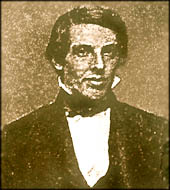 With the 2012 elections coming up next year, we'll hear a lot about presidential promises and political posturing. Here's the official platform of the Prophet Joseph Smith when he formally decided to be a presidential candidate on January 29, 1844. What did he hope to accomplish?
With the 2012 elections coming up next year, we'll hear a lot about presidential promises and political posturing. Here's the official platform of the Prophet Joseph Smith when he formally decided to be a presidential candidate on January 29, 1844. What did he hope to accomplish?
A central banking system owned by the government, with the mother bank at Washington and branch banks in the several states.
The annexation of Texas upon her application, and the extending of an invitation to Mexico and Canada to become parts of the USA.
The immediate occupation and settlement of the Oregon region.
The reduction of the National Congress, the House tw-thirds and the Senate one-half.
The freedom of the slaves through purchase by the Federal Government, the funds to be obtained by the sale of public lands.
A reform of the prison system, which would make the prisons workhouses and seminaries of learning.
The building by the government of a dam across the Mississippi River at Keokuk and the construction of locks to aid shipping around the rapids.
A reform of the strict military punishment for desertion in time of war.
A high tariff to protect young industries.
From: The Restored Church, William Edward Barrett
4/10/13
2/27/13
The Mystery Stone
Does a rock in New Mexico show the Ten Commandments in ancient Hebrew? Harvard professor says yes.

8/5/12
Marlena's Musings: Romney's Remarkable Speech in Jerusalem
 Mitt Romney, the all-but-official Republican presidential candidate, delivered a
stem-winder
of a speech to the Jerusalem Foundation today, packing emotional support
with frank policy statements. The contrast with Obama could hardly be more
dramatic. Indeed, one could go through the speech and note the many refutations
of Obama. For example, the opening comment that "To step foot into Israel is to
step foot into a nation that began with an ancient promise made in this land"
directly contrasts with Obama's crabbed statement in Cairo about "the aspiration
for a Jewish homeland [being] rooted in a tragic history."
Mitt Romney, the all-but-official Republican presidential candidate, delivered a
stem-winder
of a speech to the Jerusalem Foundation today, packing emotional support
with frank policy statements. The contrast with Obama could hardly be more
dramatic. Indeed, one could go through the speech and note the many refutations
of Obama. For example, the opening comment that "To step foot into Israel is to
step foot into a nation that began with an ancient promise made in this land"
directly contrasts with Obama's crabbed statement in Cairo about "the aspiration
for a Jewish homeland [being] rooted in a tragic history."
Also, in contrast to the nonsensical Obama administration stance on Jerusalem – sneaking in changes to captions that identified it as such and going through verbal gymnastics to avoid calling it that – Romney came out and plainly called Jerusalem "the capital of Israel."
Many of his statements are paeans to the Jewish state and its extraordinary ties to the United States. Some quotations, with my additions in italic on the key words in each quotation:
Our two nations are separated by more than 5,000 miles. But for an American abroad, you can't get much closer to the ideals and convictions of my own country than you do in Israel.But of the whole speech, it is the final words that most struck me: "May God bless America, and may He bless and protect the Nation of Israel." When last did a politician ask the Lord to protect another country and not his own?
It is my firm conviction that the security of Israel is in the vital national security interest of the United States.
We have seen the horrors of history. We will not stand by. We will not watch them play out again. It would be foolish not to take Iran's leaders at their word. They are, after all, the product of a radical theocracy. … We have a solemn duty and a moral imperative to deny Iran's leaders the means to follow through on their malevolent intentions.
our alliance runs deeper than the designs of strategy or the weighing of interests. The story of how America – a nation still so new to the world by the standards of this ancient region – rose up to become the dear friend of the people of Israel is among the finest and most hopeful in our nation's history. Different as our paths have been, we see the same qualities in one another. Israel and America are in many respects reflections of one another.
the enduring alliance between the State of Israel and the United States of America is more than a strategic alliance: it is a force for good in the world. America's support of Israel should make every American proud. We should not allow the inevitable complexities of modern geopolitics to obscure fundamental touchstones. … A free and strong America will always stand with a free and strong Israel.
By history and by conviction, our two countries are bound together. No individual, no nation, no world organization, will pry us apart. And as long as we stay together and stand together, there is no threat we cannot overcome and very little that we cannot achieve.
Comments: (1) Obama and Romney stand as far apart on Israel as they do on the sources of economic growth. (2) Over and over again, Romney returned to the moral bonds between the two countries; yes, there are mutual benefits from our connection, but ultimately it reflects something higher and greater than any of us. (3) Were he elected, it will be fascinating to watch to what extent the outlook expressed today will convey to the workaday policy issues. I expect it will substantially convey.
July 29, 2012 update: (1) Josh Katzen of the new JNS.org news service notes the contrast between Romney's saying, "I look forward to my family joining his [i.e., Netanyahu's] this evening as they observe the close of this fast day of Tisha B'Av" and Obama's snubbing Netanyahu at the White House when Obama went off to have dinner with his family in March 2010, leaving the Israeli prime minister to cool his heels.
7/4/12
The True Meaning of Liberty
A school of thought popular among U.S. libertarians holds that there is no tenable distinction between the two sorts of liberty – that they are, indeed, one and the same, to be protected (or opposed) together. In the context of U.S. constitutional law, for example, they point out that the constitution twice lists "life, liberty, and property" without making any distinctions within that troika.I am grateful that I have rights in the proverbial public square – but, as a practical matter, my most cherished rights are those that I possess in my bedroom and hospital room and death chamber. Most people are far more concerned that they can control their own bodies than they are about petitioning Congress.[13]
Anarcho-Individualists, such as Max Stirner, demanded the utmost respect for the liberty of the individual. Some in the U.S. see protecting the ideal of liberty as a conservative policy, because this would conform to the spirit of individual liberty that they consider is at the heart of the American constitution. Some think liberty is almost synonymous with democracy, at least in one sense of that word, while others see conflicts or even opposition between the two concepts, with democracy being nothing more than the tyranny of the majority.[citation needed]
Republican liberty
According to republican theorists of freedom, like the historian Quentin Skinner or the philosopher Philip Pettit, one's liberty should not be viewed as the absence of interference in one's actions, but as non-dependence. According to this view, that originates in the Roman Digest, to be a liber homo, a free man, means being in a state of non-dependence from another's arbitrary will. The second step of the argument of these neo-Roman writers, like Machiavelli, was that you have to be a member of a free self-governing civil association, a republic, if you are to enjoy individual liberty.Wikipedia
6/28/12
Sephardim-conversos-Marranos: A historical overview
Definitions
(Terms are in plural form)- ANUSIM:
- (Hebrew) 'the coerced'. Jews who were converted to another religion by force. It was also applied to their descendants. Many of them continued to practice Judaism in secret.
- CONVERSOS:
- 'The converted'.
- CRYPTO:
- Hidden; secret; of obscure origin.
- MARRANOS:
- 'Swine' (pejorative). Term applied in Spain and Portugal by Christians to descendants of the coerced, baptized Jews suspected of adhering to Judaism.
- MESHUMADIM:
- Willing converts from Judaism.
Divisions of Jewry in the Diaspora
(Ashkenazim and Sephardim are the two main divisions)- ASHKENAZIM:
- 'People of the north'. Originally German Jewry, later came to designate Jews of northern France, Poland, Russia and Scandinavia. Yiddish was widely spoken by Ashkenazim.
- LEVANTINE
- People of the Levant. Jews of the eastern Mediterranean area that is now occupied by Lebanon and Syria and Israel.
- MIZRACHIM
- 'Eastern'. Jews of North African and Middle Eastern ancestry.
- ORIENTAL
- Jews of South and East Asian ancestry.
- ROMANIOTE
- Jews of the Eastern Roman Empire, spread throughout much of Asia Minor (mostly under Roman control) before and after the destruction of the Temple. Latin speaking.
- SEPHARDIM:
- Descendants of Jews whose ancestors lived on the Iberian Peninsula (Spain and Portugal). In Mediterranean countries the Sephardim spoke Judeo-Spanish (Ladino).
- OTHERS
- Ethiopian Jews, Anusim, Karaites, Samaritans, and Lost Tribes.
Sephardim
Sephardim, Jews of the Iberian Peninsula, spoke a Judeo-Spanish dialect, written in Hebrew script, called Ladino. Many were forced to convert to Christianity between 1391 and 1497. After the expulsion of Jews from Spain in 1492 the Sephardim settled in north Africa, Italy, Egypt, Palestine, Syria, the Balkans, and the Turkish Empire. Subsequently these communities were reinforced by refugees from Portugal.Large groups later settled in the Netherlands, the West Indies, and North America. They and their descendants founded the Jewish communities of Hamburg, Amsterdam, London, and New Amsterdam (New York City). As they moved to more tolerant lands, many conversos openly returned to Judaism.
The term 'Sephardim' today has a broader definition. It includes all Sephardic communities, including Jews whose country of origin is Greece, Iran, Iraq, Morocco, Syria, Turkey and Yemen.
Anusim
A new and fascinating picture has emerged of descendants of those secret Jews living today as Catholics or Protestants but keeping alive family traditions which are unmistakably clear indications of Jewish origins.Some families to this day light candles on Friday night, circumcise newborn sons, eat thin flat bread on Passover, use biblical names, and have family traditions of not eating pork. For the most part they consider such activities family traditions and did not ascribe them to Jewish identity until, in recent years, such facts have been made clear to them. Some have expressed interest in learning more about modern Judaism with a view toward re-entering the Jewish mainstream. Others are comfortable in their present religious affiliation but are intrigued by their history.
by Bernard I. Kouchel - A Jewish Gen InfoFile
www.jewishgen.org/infofiles/sefard5.htm
6/13/12
The Hebrew Text of Alma 7:11
Determining the original language of the brass plates presents a tantalizing riddle, one that has defied numerous attempts to solve it. This riddle contains several relevant clues, each suggesting a certain linguistic background for the plates of brass. Two of the most important clues occur in Mosiah 1:2—4and Mormon 9:32—33. A third clue derives from modern attempts to understand how the block quotations from Isaiah and Malachi fit linguistically in the Book of Mormon record. While these three pieces of the larger puzzle can be arranged and rearranged to achieve various solutions to this riddle, there is one piece of evidence that has yet to be considered in detail. The Book of Mormon is replete with echoes of, allusions to, and direct quotations of scripture—a veritable treasure trove for the text critic.[1] One such brief scriptural echo, which upon closer examination turns out to be a direct quotation, provides compelling information that in turn suggests a Hebrew origin for at least a portion of the brass plates. This biblical tie is found in Alma 7:11, which is a direct quotation of Isaiah 53:4.
From Journal of Book of Mormon Studies: Volume - 14, Issue - 1, Pages: 98-103
Provo, Utah: Maxwell Institute, 2005
7/6/11
An Israeli algorithm sheds light on the Bible
 JERUSALEM (AP) — Software developed by an Israeli team is giving intriguing new hints about what researchers believe to be the multiple hands that wrote the Bible.
JERUSALEM (AP) — Software developed by an Israeli team is giving intriguing new hints about what researchers believe to be the multiple hands that wrote the Bible.The new software analyzes style and word choices to distinguish parts of a single text written by different authors, and when applied to the Bible its algorithm teased out distinct writerly voices in the holy book.
The program, part of a sub-field of artificial intelligence studies known as authorship attribution, has a range of potential applications — from helping law enforcement to developing new computer programs for writers. But the Bible provided a tempting test case for the algorithm's creators.
For millions of Jews and Christians, it's a tenet of their faith that God is the author of the core text of the Hebrew Bible — the Torah, also known as the Pentateuch or the Five Books of Moses. But since the advent of modern biblical scholarship, academic researchers have believed the text was written by a number of different authors whose work could be identified by seemingly different ideological agendas and linguistic styles and the different names they used for God.
Today, scholars generally split the text into two main strands. One is believed to have been written by a figure or group known as the "priestly" author, because of apparent connections to the temple priests in Jerusalem. The rest is "non-priestly." Scholars have meticulously gone over the text to ascertain which parts belong to which strand.
When the new software was run on the Pentateuch, it found the same division, separating the "priestly" and "non-priestly." It matched up with the traditional academic division at a rate of 90 percent — effectively recreating years of work by multiple scholars in minutes, said Moshe Koppel of Bar Ilan University near Tel Aviv, the computer science professor who headed the research team.
"We have thus been able to largely recapitulate several centuries of painstaking manual labor with our automated method," the Israeli team announced in a paper presented last week in Portland, Oregon, at the annual conference of the Association for Computational Linguistics. The team includes a computer science doctoral student, Navot Akiva, and a father-son duo: Nachum Dershowitz, a Tel Aviv University computer scientist, and his son, Idan Dershowitz, a Bible scholar at Hebrew University in Jerusalem.
The places in which the program disagreed with accepted scholarship might prove interesting leads for scholars. The first chapter of Genesis, for example, is usually thought to have been written by the "priestly" author, but the software indicated it was not.
Similarly, the book of Isaiah is largely thought to have been written by two distinct authors, with the second author taking over after Chapter 39. The software's results agreed that the book might have two authors, but suggested the second author's section actually began six chapters earlier, in Chapter 33.
The differences "have the potential to generate fruitful discussion among scholars," said Michael Segal of Hebrew University's Bible Department, who was not involved in the project. Over the past decade, computer programs have increasingly been assisting Bible scholars in searching and comparing texts, but the novelty of the new software seems to be in its ability to take criteria developed by scholars and apply them through a technological tool more powerful in many respects than the human mind, Segal said.
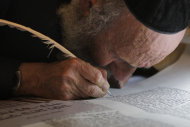 Before applying the software to the Pentateuch and other books of the Bible, the researchers first needed a more objective test to prove the algorithm could correctly distinguish one author from another.So they randomly jumbled the Hebrew Bible's books of Ezekiel and Jeremiah into one text and ran the software. It sorted the mixed-up text into its component parts "almost perfectly," the researchers announced.
Before applying the software to the Pentateuch and other books of the Bible, the researchers first needed a more objective test to prove the algorithm could correctly distinguish one author from another.So they randomly jumbled the Hebrew Bible's books of Ezekiel and Jeremiah into one text and ran the software. It sorted the mixed-up text into its component parts "almost perfectly," the researchers announced.The program recognizes repeated word selections, like uses of the Hebrew equivalents of "if," ''and" and "but," and notices synonyms: In some places, for example, the Bible gives the word for "staff" as "makel," while in others it uses "mateh" for the same object. The program then separates the text into strands it believes to be the work of different people. Other researchers have looked at linguistic fingerprints in less sacred texts as a way of identifying unknown writers. In the 1990s, the Vassar English professor Donald Foster famously identified the journalist Joe Klein as the anonymous author of the book "Primary Colors" by looking at minor details like punctuation.
In 2003, Koppel was part of a research team that developed software that could successfully tell, four times out of five, if the author of a text was male or female. Women, the researchers found, are far more likely to use personal pronouns like "she" and "he," while men prefer determiners like "that" and "this" — women, in other words, talk about people, while men prefer to talk about things. That success sparked debate about how gender shapes the way we think and communicate.
Research of this kind has potential applications for law enforcement, allowing authorities to catch imposters or to match anonymous texts with possible authors by identifying linguistic tics. Because the analysis can also help identify gender and age, it might also allow advertisers to better target customers.The new software might be used to investigate Shakespeare's plays and settle lingering questions of authorship or co-authorship, mused Graeme Hirst, a professor of computational linguistics at the University of Toronto. Or it could be applied to modern texts: "It would be interesting to see if in more cases we can tease apart who wrote what," Hirst said.The algorithm might also lead to the creation of a style checker for documents prepared by multiple authors or committees, helping iron out awkward style variations and creating a uniform text, Hirst suggested.
What the algorithm won't answer, say the researchers who created it, is the question of whether the Bible is human or divine. Three of the four scholars, including Koppel, are religious Jews who subscribe in some form to the belief that the Torah was dictated to Moses in its entirety by a single author: God.
For academic scholars, the existence of different stylistic threads in the Bible indicates human authorship.But the research team says in their paper they aren't addressing "how or why such distinct threads exist."
Those for whom it is a matter of faith that the Pentateuch is not a composition of multiple writers can view the distinction investigated here as that of multiple styles," they said. In other words, there's no reason why God could not write a book in different voices.
No amount of research is going to resolve that issue," said Koppel.
by Matti Friedman for AP
6/24/11
The Hamas - Oops, Gaza - Flotilla
6/12/11
How To Build a Bridge
 Approach Jews from the hallmarks of their belief and cultural system. If you can gain their confidence, ask them about their heritage, their customs, their holidays. Invite them to ask you questions. When referring to Jesus Christ, use Yeshua. They must hear that Yeshua is the god of Avraham, Isaac and Jacob. You will have to pray mightily that the Holy Ghost will touch your contacts to effect change, because they will discern eventually that they're being faced with a change of identity. This is a Herculean, frightening task for a Jew, but of course one that must eventually be accomplished, for we know that "every knee must bend and every tongue confess that Jesus is the Christ".
Approach Jews from the hallmarks of their belief and cultural system. If you can gain their confidence, ask them about their heritage, their customs, their holidays. Invite them to ask you questions. When referring to Jesus Christ, use Yeshua. They must hear that Yeshua is the god of Avraham, Isaac and Jacob. You will have to pray mightily that the Holy Ghost will touch your contacts to effect change, because they will discern eventually that they're being faced with a change of identity. This is a Herculean, frightening task for a Jew, but of course one that must eventually be accomplished, for we know that "every knee must bend and every tongue confess that Jesus is the Christ". It is important to let your Jewish investigator know of this book so he may discover that the Doctrine and Covenants contain revelations to mankind from the only Begotten Son of God and contains only perfect doctrine. The Talmud, written by men through the centuries who at times have been inspired, cannot be compared with the proclamation that the Doctrine and Covenants is a divine and inspired collection. Jewish contacts need to be exposed to the scope of subject matter in the doctrinal “essays”. Read the revelatory and testamentary material contained therein, and realize the timeliness of these proclamations of instruction is a factor in knowing the Church of Jesus Christ of Latter-day Saints is their true home.
It is important to let your Jewish investigator know of this book so he may discover that the Doctrine and Covenants contain revelations to mankind from the only Begotten Son of God and contains only perfect doctrine. The Talmud, written by men through the centuries who at times have been inspired, cannot be compared with the proclamation that the Doctrine and Covenants is a divine and inspired collection. Jewish contacts need to be exposed to the scope of subject matter in the doctrinal “essays”. Read the revelatory and testamentary material contained therein, and realize the timeliness of these proclamations of instruction is a factor in knowing the Church of Jesus Christ of Latter-day Saints is their true home.Marlena Tanya Muchnick with Daniel C. Baker
5/31/11
Story of Shavu'ot or ('os) - June 6th - June 9th, 2011
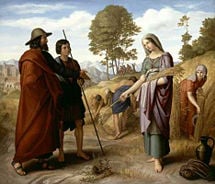
Shavuot commemorates the anniversary of the day God gave the Ten Commandments to Moses and the Israelites at Mount Sinai. It is one of the three biblical pilgrimage festivals known as the shalosh regalim in Jewish tradition.
The date of Shavuot is directly linked to that of Passover. On Passover, the Jewish people were freed from their enslavement to Pharaoh; on Shavuot they were given the Law and became a nation committed to serving God. Shavuot is celebrated in Israel for one day and in the Diaspora (outside of Israel) for two days. Reform Jews celebrate only one day, even in the Diaspora. Karaite Jews and Christians believe that Shavuot always falls on a Sunday, while mainstream Jews follow the teaching of the Talmud, which holds that the holiday commences immediately after the "counting of the omer," or 50 days after Passover.
Celebrating the Day of the First Fruits

At Shavuot the farmers would gather the Bikkurim into baskets and bring them to the city of Jerusalem where they would be eaten in the holy city. The farmers living close to Jerusalem would bring fresh fruits, while those who had to travel a long distance carried dried raisins and figs. This joyful occasion was celebrated with the music of fifes, timbres, and drums. As the pilgrims approached the city walls they were greeted by the inhabitants of the city. Sometimes the King himself would join the procession to the Temple Mount.The Bikkurim ritual is no longer practiced in present day Israel.
Chanting the Ten Commandments and reading Megilat Rut, known as the Book of Ruth in English. This biblical book tells the story of two women: a Jewish woman named Naomi and her non-Jewish daughter-in-law Ruth. Their relationship was so strong that when Ruth’s husband died she decided to join the Jewish people by converting to Judaism. The Book of Ruth is read during Shavuot because it takes place during the harvest season and because Ruth’s conversion is thought to reflect our acceptance of the Torah on Shavuot. Also, Jewish tradition teaches that King David (Ruth’s great-great-grandson) was born and died on Shavuot.
- Decorating our synagogues and homes with roses or aromatic spices. This custom is based on midrashim that connect the events at Sinai to spices and roses.
The Foods of Shavuot
5/19/11
Israel-Palestinian Conflict and History
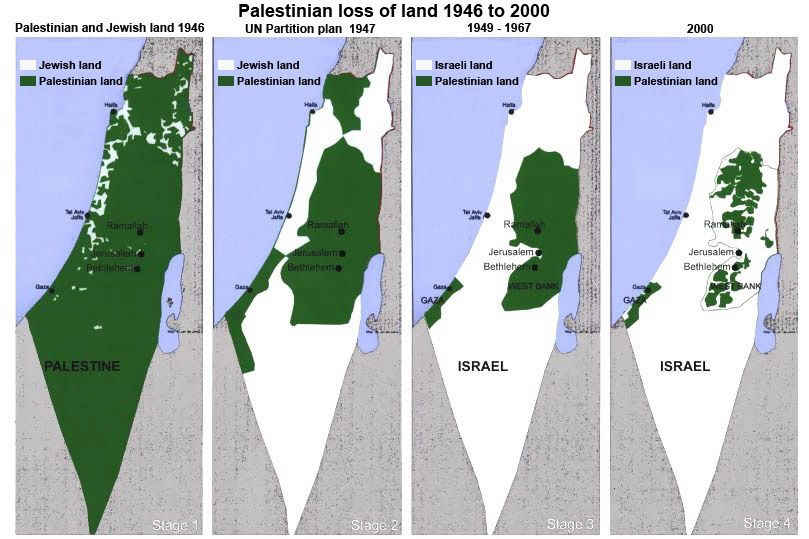
To learn more, check out www.mideastweb.org/nutshell.htm, www.markhumprys.com/israel.conflict.html
The Six-Day War - 1967
A brief summary of the campaign: Following the short Suez War of 1956 between Israel and Egypt resolved nothing, and only set the stage for a future war between the Jewish nation and its Arab neighbors. In the 1956 war, Israeli forces fairly easily defeated the Egypian military and occupied the Sinai Peninsula and Gaza Strip, only to give it back to Egyptian control in the ceace-fire agreement. In the years after 1956, Egypt and the other Arab powers, Syria and Iraq, more closely became aligned with the Soviet Union, which supplied them with large amounts of modern military weaponry and Soviet advisors and trainers. Likewise, Israel moved closer to the United States in those years, to the point where the Arab- Israeli Conflict became a part of the larger and very dangerous Cold War between the U.S. and its allies on one side, and the Soviets and their allies and satellites on the other side.
As the underlying tensions between the Arab nations and Israel remained unchanged since the First Arab-Israeli War of 1948-1949, the outbreak of a third major war was expected. The introduction of the American-Soviet competition and arms sales in the region only accelerated the likelihood of a Middle Eastern war evolving into a Cold War confrontation. the immediate cause of war in 1967 came out of Egypt's decision to expel United Nations (UN) troops from the Sinai peninsula and blockade Israel's port of Eilat. The UN forces were intended to form a buffer between the border separating Israel and Egypt, and their expulsion led the Israeli government to fear an imminent attack by Egypt.
It should be pointed out that ever since the start of the first war in 1948, Israel had existed in a continued legal state of war with all of its Arab neighbors, including Iraq and Saudi Arabia. The first two wars were ended with cease-fires, but with no lasting peace, not unlike the concusion of the 1950-1953 Korean War, in which an armistice ended the fighting, but did not bring a legal end to war. Thus, when the military forces of Egypt, Syria, and Jordan, as well as Iraq, began to mobilize and make obvious preparations for war, Israel felt forced to act in self-defence.
In May 1967, Egypt and Syria took a number of steps which led Israel to believe that an Arab attack was imminent. On May 16, Nasser ordered a withdrawal of the United Nations Emergency Forces (UNEF) stationed on the Egyptian-Israeli border, thus removing the international buffer between Egypt and Israel which had existed since 1957. On May 22, Egypt announced a blockade of all goods bound to and from Israel through the Straits of Tiran. Israel had held since 1957 that another Egyptian blockade of the Tiran Straits would justify Israeli military action to maintain free access to the port of Eilat. Syria increased border clashes with Israel along the Golan Heights and mobilized its troops.
The U.S. feared a major Arab-Israeli and superpower confrontation and asked Israel to delay military action pending a diplomatic resolution of the crisis. On May 23, U.S. President Lyndon Johnson publicly reaffirmed that the Gulf of Aqaba was an international waterway and declared that a blockade of Israeli shipping was illegal. In accordance with U.S. wishes, the Israeli cabinet voted five days later to withhold military action.
The U.S., however, gained little support in the international community for its idea of a maritime force that would compel Egypt to open the waterway and it abandoned its diplomatic efforts in this regard. On May 30, President Nasser and King Hussein signed a mutual defense pact, followed on June 4 by a defense pact between Cairo and Baghdad. Also that week, Arab states began mobilizing their troops. Against this backdrop, Nasser and other Egyptian leaders intensified their anti-Israel rhetoric and repeatedly called for a war of total destruction against Israel.
Arab mobilization compelled Israel to mobilize its troops, 80 percent of which were reserve civilians. Israel feared slow economic strangulation because long-term mobilization of such a majority of the society meant that the Israeli economy and polity would be brought to a virtual standstill. Militarily, Israeli leaders feared the consequences of absorbing an Arab first strike against its civilian population, many of whom lived only miles from Arab-controlled territory. Incendiary Arab rhetoric threatening Israel's annihilation terrified Israeli society and contributed to the pressures to go to war.
Against this background, Israel launched a pre-emptive strike against Egypt on June 5, 1967 and captured the Sinai Peninsula and the Gaza Strip. along with coordinated air strikes that effectively destroyed the air forces of Egypt, Syria, Jordan, and Iraq on the ground.Despite an Israeli appeal to Jordan to stay out of the conflict, Jordan attacked Israel and lost control of the West Bank and the eastern sector of Jerusalem. Israel went on to capture the Golan Heights from Syria. The war ended on June 10.To ask Israel to return to the 1967 border designations with the Palestinians - to return the 12 mile waste area of the West Bank, as President Obama has today demanded in his speech to the nation, is a dangerous idea. One can assume the realigned borders would remain secure, but that is the dream - not the reality. To assume the Palestinians will drop their arms, love Israel and stop wanting to overtake it, is folly. They hate the Jews. They will cross their borders, bomb their Jewish neighbors and murder will become a daily occurrence. With modern warfare, Israel would not stand a chance of survival.
With a border change such as Obama calls for, Old Jerusalem would become off limits to Jews - and to all visitors - the Temple Mount and Wailing Wall, the Garden Tomb of Jesus, the Dome of the Rock, and much more, all will pass into Palestinian hands if Israel has to realign its borders as they were in 1967, after the Six Day war. This is a bad idea that will affect the Western way of life, and impair seriously the relationship between Israel and America. Let us pray that Heavenly Father will protect the land of Israel that it does not perish. Marlena
 |
| East Jerusalem showing Jerusalem's Old City and some of the holiest sites of Judaism, Christianity, and Islam, such as the Temple Mount, Western Wall, Al-Aqsa Mosque, and the Church of the Holy Sepulchre. |
Our Right to the Land of Israel
There is a fundamental argument that must be dealt with. At the bottom of all the Arab rhetoric lies one basic claim: "You are intruders. This is our land. We had been living here for centuries and then you decided to take it from us."
Once it is established that the Jews have a valid right to the Land of Israel, then the violence, hatred, and disregard for life that has characterized the Arab position can be judged for what it is. Unless that right is established, the Arabs will always claim that they have a valid goal: reclaiming a land that is rightfully theirs. And once validity is granted to their goal, the debate whether all means are acceptable to attain it or not is one of philosophy.
What is our claim to the land? -Gd's promise in the Torah. God told Abraham: "I have given this land to your descendants." For one-and-a- half thousand years the Land of Israel was our home, and ever since then, Jews everywhere have longed to come home to their eternal heritage - to Jerusalem, the site of the Holy Temple; to Hebron, the burial place of Abraham, Isaac and Jacob; and to Bethlehem, where Rachel weeps for her dispersed children and awaits their return. Even throughout the two thousand years during which our people wandered from country to country, Israel has remained the national home of every Jew. From the beginning of the exile until this day, no matter how farflung his current host country might be, every Jew has turned to face the Holy Land in his thrice-daily prayers
The Holy Land, whose boundaries were prescribed by the Holy One, blessed be He, in His holy Torah, was granted to the nation of Israel, the eternal people. Any sacrifice of the Holy Land that was granted to us by God is of absolutely no validity.This explanation is, moreover, the only rationale that cannot be refuted by the Arabs or the Americans. They also accept the Bible and believe in the truth of its prophecies. The Koran does not dispute the Jews' right to the Land of Israel. And can you conceive of an American president telling his people that Gd's promise to Abraham is not relevant? Indeed, the connection between the land and our people is so well established that everywhere it is referred to as "the Land of Israel."
For this reason, it is important to emphasize that this connection is rooted in the Bible's prophecies. It would not be desirable to base our claim to the Land of Israel on the Balfour Declaration or international agreements of the present century, for these agreements could be countermanded by other ones. After all, how favorable is the United Nations to Israel today?
Nor is the fact that our people once lived in the land sufficient in and of itself to establish our claim to it today. If the American Indians would lodge a claim to all of America, would it be granted them?
When the Bible's prophecies serve as the basis for our claim, then many other arguments are effective in reinforcing the position. But when that foundation is lacking, we have difficulty refuting the gentiles' claim: "You are robbers, because you took by force the lands of the... nations."
After thousands of years of exile, our people have returned to our land. Every portion of the land over which Jewish authority is exercised was won in defensive wars in which Gd showed overt miracles. Now when Gd grants His people land in such ways, should it be returned? Is it proper to spurn a Divine gift?
www.truepeace.org
The 13 Articles of Faith - LDS
We believe in God, the Eternal Father, and in His Son, Jesus Christ, and in the Holy Ghost.
We believe that men will be punished for their own sins, and not for Adam's transgression.
We believethat through the Atonement of Christ, all mankind may be saved, by obedience to the laws and ordinances of the Gospel.
We believe that the first principles and ordinances of the Gospel are: first, Faith in the Lord Jesus Christ; second, Repentance; third, Baptism by immersion for the remission of sins; fourth, Laying on of hands for the gift of the Holy Ghost.
We believe that a man must be called of God, by prophecy, and by the laying on of hands by those who are in authority, to preach the Gospel and administer in the ordinances thereof.
We believe in the same organization that existed in the Primitive Church, namely, apostles, prophets, pastors, teachers, evangelists, and so forth.
We believe in the gift of tongues, prophecy, revelation, visions, healing, interpretation of tongues, and so forth.
We believe the Bible to be the word of God as far as it is translated correctly; we also believe the Book of Mormon to be the word of God.
We believe all that God has revealed, all that He does now reveal, and we believe that He will yet reveal many great and important things pertaining to the Kingdom of God.
We believe in the literal gathering of Israel and in the restoration of the Ten Tribes; that Zion (the New Jerusalem) will be built upon the American continent; that Christ will reign personally upon the earth; and, that the earth will be renewed and receive its paradisiacal glory.
We claim the privilege of worshiping Almighty God according to the dictates of our own conscience, and allow all men the same privilege, let them worship how, where, or what they may.
We believe in being subject to kings, presidents, rulers, and magistrates, in obeying, honoring, and sustaining the law.
We believe in being honest, true, chaste, benevolent, virtuous, and in doing good to all men; indeed, we may say that we follow the admonition of Paul—We believe all things, we hope all things, we have endured many things, and hope to be able to endure all things. If there is anything virtuous, lovely, or of good report or praiseworthy, we seek after these things.
The Prophet Joseph Smith
History of the Church, Vol. 4, pp. 535—541
Jewish celebration in Ghetto

Archive photo - 18th Century
Looking for a Map of the World?
Palm it from Russia east or west to see remainder of world's geography,
http://www.russia-ukraine-travel.com/map-european-russia.html
Get Ye Understanding...
__________________________
Marlena's websites:
http://www.jewishconvert-lds.com. Info re firesides, see and order books, ebooks, Judaica, links to Jewish sites, much more.
http://www.peopleofthebook-judaica.com - link to Israel Historical References. Eleven articles from Church scholars on Israel, Jewish migrations, Arab-Israeli conflict,etc.
http://www.peopleofthebook-judaica.com/historical.html.
http://berdichev1941.com
Order my novel- Historical fiction - Ukraine Holocaust story. My books are $10. I mail the items. To order, click on first website. All funds go toward republishing.
Charming Video of Jewish Girls' Thoughts on God
Approximate Timeline of Hebrew Events
The Talmud teaches that there are three things that can change the course of a person's life -
Teshuva (correcting your mistakes between you and the Almighty, and between you and your fellow man), Tefillah (heartfelt prayer), and Tzedakah (acts of righteousness, charity).
Check out my friend Mark Paredes' wonderful blog:
http://www.jewishjournal.com/jews_and_mormons/item/tisha_bav_mormons_and_temples_39100719/
He writes well and is timely concerning issues of the Mormon and Jewish communities.
International Association of Jewish Genealogical Societies, Inc.
| Links |  |
Government Archives With Documents/Index On-Line
Government Source for genealogical data for Scotland http://www.nationalarchives.gov.uk/default.htm National Archives of the United Kingdom
European Websites http://www.compactmemory.de / Internet Archive of Jewish Periodicals (German) 1806 -1938
Holocaust Websites http://en.auschwitz.org.pl Auschwitz Database
Latin America Websites http://www.cemla.com/busqueda.html Center for Studies Latin American
Maps http://lcweb2.loc.gov/ammem/gmdhtml/gnrlhome.html Library of Congress Map Library
Newspapers http://multiculturalcanada.ca/mcc_cjr Canadian Jewish Review
Sephardic Websites http://www.sephardicgen.com/ Sephardic Genealogy Resources
South African Websites http://chrysalis.its.uct.ac.za/CGI/cgi_Rootweb.exe South African Jewish Database-Kaplan Centre for Jewish Migration and Genealogy Studies
United States Websites http://www.americanjewisharchives.org/ American Jewish Archives (Cincinnati, OH)
Prepared by Jan Meisels Allen, Director, IAJGS on 7/02/09 for 29th IAJGS International Conference on Jewish Genealogy Resource Room |
| Copyright 2000-2009, International Association of Jewish Genealogical Societies, Inc.
Send comments and corrections to the Webmaster, Daniel Horowitz. |
http://www.youtube.com/watch?v=cLFVZBURSLc
See a comprehensive list of Old Testament Israelite names and meanings:
http://judaicaworld.wordpress.com/overflow-articles/
******************************************************
Watch Marlena's interview with AM Utah: http://www.youtube.com/user/AMUtahsShow ***************************************************
Missionary and Marlena at her fireside

Wailing Wall At Dusk

Jewish neighborhood in Jerusalem

Belarus, Ukraine

Fireside in Kirkland - March '09

DVD - My Fireside March 2009
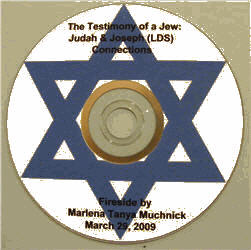
May the Lord bless you and keep you.
May the Lord make His face shine upon you.
and be gracious to you.
May the Lord turn His face toward you,
and give you peace.
Numbers 6:24-26
Map Of Israel

...and the remnant shall be gathered again...
Morning beauties

The Hasidim (Pious Ones)

Frederic Aranda
Angels are always in our midst...

Have you blessed another life today?

